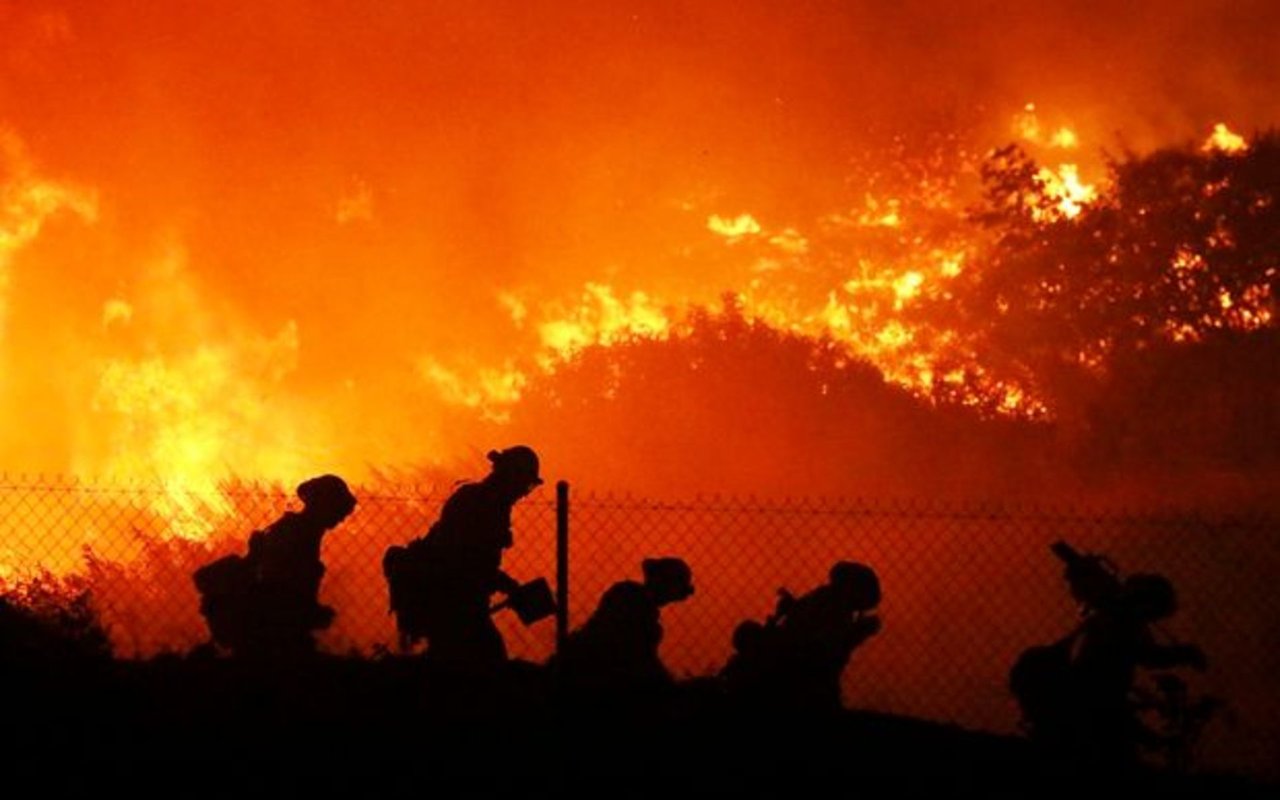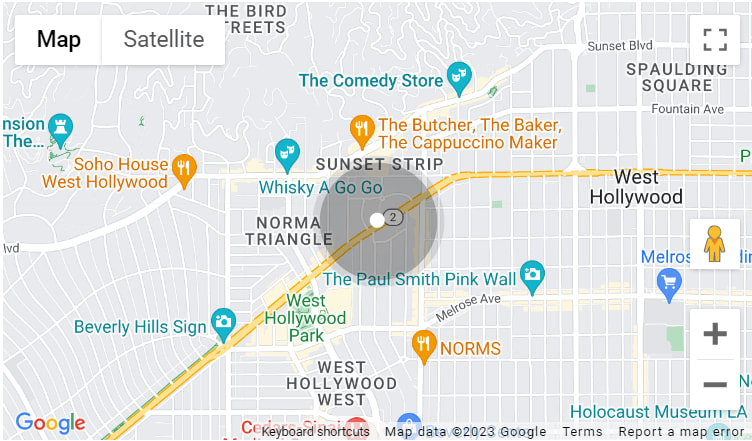September was National Preparedness Month and October brings us National Fire Prevention Week and the Great ShakeOut in Los Angeles. No matter what day, week or month it is, we should always be ready. Here are great tips on how to get yourself, your family and our community ready for an emergency.
Tip 1: Prepare Supplies Well Before Disaster Strikes
Preparing yourself, your family, and your home reduces the serious impacts of a disaster. Build an emergency “Go Bag” for each person that lives with you. A “Go Bag” should be easy to carry (e.g. backpack or duffle), that contains important and personal items such as a first-aid kit, flashlight, glow sticks, hand-crank radio, clothing, battery charger, wrench, and prescription medication. Include copies of your ID, passport, list of medications, insurance papers, and other vital documents. Do not forget to make “Go Bags” for children and pets, including items such as diapers or leashes! Find a helpful checklist from ready. Also, ATMs and credit card readers will not always be available, so have some cash on hand to pay for immediate expenses like lodging, food and gas. Include bills in small denominations of $1, $5 and $10.
Tip 2: Make a Disaster Preparedness Plan
Have the “disaster” conversation at home and talk about what your emergency plan is. Discuss how to evacuate and where you will meet. It is important to create, practice, and maintain your plan. Your plan should include people with disabilities and others with access and functional needs, such as children, elderly individuals, and pets. Pick an “out-of-state” contact for family members to call if separated by disaster. Do a home-hazard hunt. Check for anything that can move, fall, break, or cause a fire. Secure all home hazards and prepare a disaster supply kit. Have enough food, water, and medical supplies for at least 7 days. The suggested amount of water is one gallon per day, per person (this includes children and pets).
Tip 3: Organize Your Neighborhood
Disasters can overwhelm 9-1-1 emergency responders like medics, fire, and police. In case of emergency, your best source of help may be your neighbors. This is particularly true during “The Golden Hour.” The first 60 minutes following a disaster are golden – for saving lives and reducing the severity of injuries and decreasing property damage. In the City of Los Angeles, the Ready Your Los Angeles Neighborhood (RYLAN) is designed to help our neighborhood prepare for a disaster by creating a neighborhood disaster response plan. Mapping our neighborhood, knowing your neighbors, and having a neighborhood disaster response plan are crucial for communities to be resilient after a disastrous event.
Tip 4: Connect & Communicate
Log in to our Nextdoor neighborhood (“The Oaks and Los Feliz Estates”) and sign up to receive Urgent Alerts on your Mobile Alert Settings. This gives you up-to-date information and specific instructions on what to do during a disaster from our local police, fire, and/or emergency service departments. You can also sign up for LA’s emergency notification alert system, notifyla. Additional resources include your regional FEMA department, the State Office of Emergency Services, your County’s Office of Emergency Management, and the American Red Cross, amongst others. Communicate with your neighbors!
Tip 5: Practice and Train
Practice your family and community disaster plans. Your confidence as responders will increase the more you practice. Enroll in preparedness training classes such as level 1 CERT, First Aid & CPR, Amateur Radio, Active Shooter, Stop the Bleed, and other classes to enhance your readiness skills. The more you practice and train, the better prepared you will become! FEMA and ready make it easy to create a plan. The City of Los Angeles Emergency Management Department (EMD) recommends that neighbors everywhere prepare, organize, practice, connect, communicate, and train. Hopefully these five tips will help prepare you, your family, and neighbors be more prepared should an emergency or natural disaster occur in your community. You can never be too prepared, so take the initiative during National Preparedness Month and start communicating with your neighbors about how to prepare for both everyday emergencies as well as the unexpected in your community.
Tip 6: Have a Firewise Home
You can make your home safer from wildfire. Learn how with these helpful tips! Below are simple fixes from roof to foundation to make your home safer from embers and radiant heat.
- Clean roofs and gutters of dead leaves, debris and pine needles that could catch embers.
- Replace or repair any loose or missing shingles or roof tiles to prevent ember penetration.
- Enclose under-eave and soffit vents or screen with metal mesh to prevent ember entry.
- Cover exterior attic vents with metal wire mesh no larger than 1/8 inch to prevent sparks from entering the home.
- Repair or replace damaged or loose window screens and any broken windows.
- Screen or box-in areas below patios and decks with wire mesh to prevent debris and combustible materials from accumulating.
- Move any flammable material away from wall exteriors – mulch, flammable plants, leaves and needles, firewood piles – anything that can burn.
- Remove anything stored underneath decks or porches.
Firewise Landscaping
- Keep leaves and needles off your roof and deck. Create a fuel free area within 3-5 feet of your home’s perimeter. From 5 feet to a minimum of 30 feet out, thin and space vegetation, remove dead leaves and needles, prune shrubs and tree limbs. Keep areas around decks, sheds, fences and swing sets clear of debris and vegetation.
- To prevent fire spread, trim back branches that overhang structures and prune branches of large trees up to 6 to 10 feet from the ground. Remove plants containing resins, oils, and waxes; make sure organic mulch is at least 5 feet from structures.
- Choose Firewise plants – find lists at firewise or from your local Cooperative Extension service.
Fire-Resistant Attachments, Walls & Windows
- Any attachments to your home such as decks, porches, and fences must be fire-resistant. If not, your entire home is vulnerable to ignition.
- Embers can collect in small nooks and crannies and ignite combustible materials; radiant heat from flames can crack windows. Use fire-resistant siding such as brick, fiber-cement, plaster or stucco and tempered or double-paned glass windows to protect your home.
Plants and Landscape
- Store firewood away from your home
- Landscape with fire-resistant plants
- Create fuel breaks
- Prune any low-hanging tree branches
- Mow your lawn regularly
Tip 7: Confirm Your Homeowners Insurance Policies
Some carriers are dropping coverage in hillside and brush intensive locations. Contact your agent to see if this is something that may happen to you, and/or to have a backup plan.
Cover Image from: DAVID SWANSON/ASSOCIATED PRESS
Cover Image from: DAVID SWANSON/ASSOCIATED PRESS

